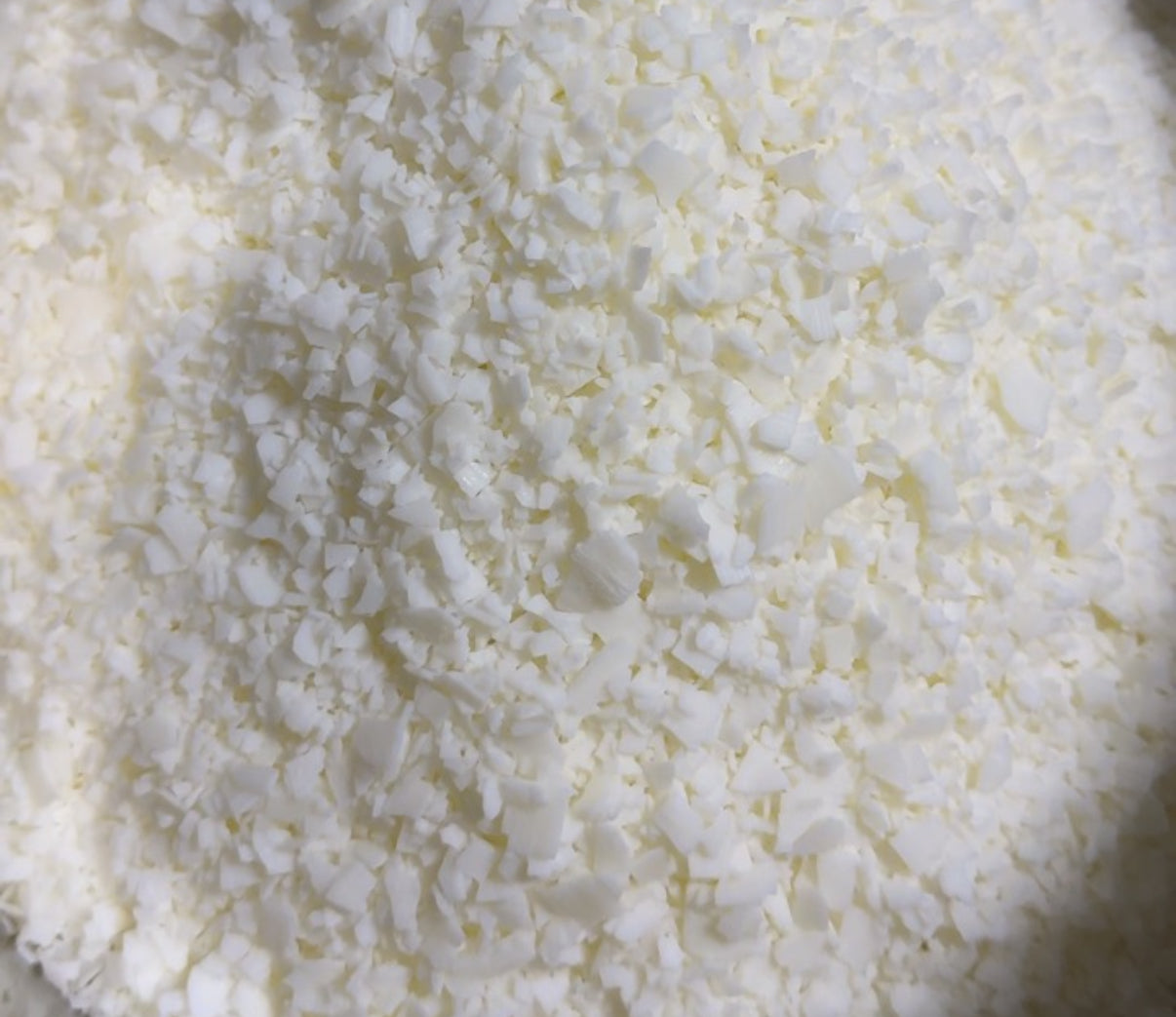Candles can instantly transform a space—creating calm, warmth, and ambience. But not all candles are created equal. While most people focus on fragrance or design, the type of wax used plays a significant role in both your health and the environment.
With so many options—soy, beeswax, coconut, palm, paraffin, and blends—it can be hard to know what’s best. In this guide, we’ll compare the most common natural waxes and explain why 100% soy wax stands out as a healthy, sustainable, and affordable choice for everyday use.
What Is Candle Wax Made From?
Candle wax is the fuel that allows the candle to burn. It can be made from natural sources (like soybeans or beeswax), synthetic ingredients (like paraffin), or a blend of both.
Each wax has different:
-
Burn characteristics
-
Scent throw
-
Environmental impact
-
Health implications
Understanding these differences helps you choose candles that are safer for your home—and better for the planet.
The Problem With Paraffin Wax
Search Term: is paraffin wax toxic in candles
Let’s start with the most common (and most controversial) wax: paraffin.
Paraffin is a byproduct of petroleum refining. It’s cheap, widely used in commercial candles, and offers a strong scent throw. But burning paraffin can release benzene and toluene, both of which are known carcinogens.
🔥 A study by South Carolina State University found that paraffin candles emit harmful chemicals linked to asthma and cancer, especially in poorly ventilated spaces.
In addition, paraffin is non-renewable and contributes to fossil fuel consumption. If you're aiming for a clean, green home—it's best to avoid it altogether.
What Are Natural Waxes?
Natural waxes are derived from plants or animals and are free from synthetic or petroleum-based ingredients. The most popular include:
-
Soy wax – from soybeans
-
Beeswax – from honeybee hives
-
Coconut wax – from coconut oil
-
Rapeseed wax – from rapeseed (canola) plants
-
Palm wax – from palm oil (ethically controversial)
Each has unique pros and cons, which we’ll break down next.
Soy Wax: The Balanced Choice for Health & Sustainability
Search Term: is soy wax safe for home use
Soy wax is made from hydrogenated soybean oil, a renewable and biodegradable resource. It’s the most popular natural wax—and for good reason.
✅ Health Benefits:
-
Burns cleaner than paraffin
-
Produces little to no soot when trimmed properly
-
Non-toxic and free from petroleum byproducts
-
Ideal for people with asthma, allergies, or chemical sensitivity
🌱 Environmental Benefits:
-
Made from renewable crops
-
Biodegradable and easy to clean with soap and water
-
Often sourced from sustainable farming practices in the US or Australia
🕯️ Burn Performance:
-
Slower burn = longer-lasting candle
-
Holds fragrance well (especially when blended with essential oils)
-
Excellent for everyday use and gifting
Lunaire’s candles are made from 100% soy wax—not a blend—ensuring a clean, consistent burn that’s safe for your home and kind to the earth.
Beeswax: The Cleanest Burning, But Not Vegan
Search Term: benefits of beeswax candles
Beeswax is one of the oldest candle materials, known for its natural golden colour and subtle honey scent. It burns incredibly cleanly and even purifies the air by releasing negative ions.
🐝 Pros:
-
Long burn time
-
Naturally scented
-
No additives or processing
-
Cleans indoor air by binding to toxins and dust
⚠️ Cons:
-
Expensive (up to 3x more than soy)
-
Not vegan
-
Limited fragrance throw (best unscented or lightly scented)
Best suited for: People sensitive to fragrances, those seeking hypoallergenic or all-natural options.
Coconut Wax: Luxurious but Often Blended
Search Term: coconut wax vs soy wax
Coconut wax is made from cold-pressed coconut oil. It’s creamy, smooth, and often used in high-end candles. However, pure coconut wax is too soft to use alone—so it’s often blended with soy or paraffin to stabilise it.
🥥 Pros:
-
Great scent throw
-
Smooth appearance
-
Sustainable source
⚠️ Cons:
-
Rare to find 100% coconut wax candles
-
Higher cost
-
Often labelled “coconut blend” without clarity on what it's mixed with
Rapeseed Wax: Low-Impact but Less Available
Search Term: is rapeseed wax sustainable
Popular in Europe, rapeseed wax is a non-GMO, locally grown option with a low carbon footprint. It’s similar to soy wax in texture and burn but not widely available in Australia or globally.
A promising option—but less accessible for most candle brands or buyers.
Palm Wax: Controversial Due to Deforestation
Search Term: problems with palm wax in candles
Palm wax has good burn properties, but the palm oil industry has been linked to widespread deforestation, habitat destruction, and unethical labour practices.
Even "sustainable" palm wax is disputed, and many consumers and brands avoid it for this reason.
Wax Comparison Chart
| Wax Type | Clean Burning | Renewable | Cost | Scent Throw | Notes |
|---|---|---|---|---|---|
| Soy Wax | ✅ Yes | ✅ Yes | 💲💲 | ✅ Strong | Vegan, affordable, widely available |
| Beeswax | ✅ Excellent | ✅ Yes | 💲💲💲 | ❌ Mild | Non-vegan, purifies air |
| Coconut Wax | ✅ Yes (if pure) | ✅ Yes | 💲💲💲 | ✅ Excellent | Usually blended, luxurious |
| Rapeseed Wax | ✅ Yes | ✅ Yes | 💲💲 | ✅ Moderate | Rare in AU, sustainable |
| Paraffin | ❌ No | ❌ No | 💲 | ✅ Strong | Linked to indoor air pollution |
| Palm Wax | ✅ Yes | ✅ Yes* | 💲💲 | ✅ Strong | Sustainability concerns |
How to Read a Candle Label Like a Pro
-
Look for “100% soy wax”—blends are often unclear
-
Avoid vague phrases like “natural wax” unless the ingredients are specified
-
Choose cotton or wood wicks (avoid metal-core)
-
Pick brands that disclose sourcing and manufacturing practices
Transparency is the new luxury. Brands like Lunaire proudly disclose their use of 100% soy wax, natural fragrances, and plastic-free packaging.
Final Verdict: Which Wax Is Best for You?
If you’re after a clean, safe, and sustainable candle for daily use or gifting, 100% soy wax is your best bet. It offers an ideal balance of performance, affordability, and eco-friendliness—especially when paired with a refillable, reusable vessel.
Beeswax and coconut wax are also great choices if budget or availability isn’t a concern, but make sure you know what’s in the blend.
🕯️ Looking for safe, stylish candles made from 100% soy wax? Explore Lunaire’s refillable candle range—designed for conscious homes and beautiful living.




